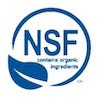4 growth opportunities for organic personal care4 growth opportunities for organic personal care
From certification to formulation, we explore the challenges and opportunities facing the organic personal care industry in 2013. Whether you're selling these products or formulating them, here's what you should know.

When David Bronner, president of Dr. Bronner’s Magic Soaps, referred to organic personal care as the Wild, Wild West back in 2010, it was for good reason.
Between misbranding of so-called “organic” personal care, formulation barriers and consumer confusion, organic personal care, still in its infancy, has faced many challenges over the past several years. But thanks to new retail policies, formulation advancements and increased consumer demand, the category is looking strong.
“It’s very clear to us that consumers are getting more savvy and knowing what to look for in terms of safer and organic ingredients,” said Jessica Walden, technical specialist for Quality Assurance International (QAI), who leads education efforts on natural and organic personal care.
In 2012, personal care products containing 70 percent organic content experienced a 43.7 percent increase in sales, according to market research firm SPINS. Skin care represented the biggest chunk of sales, bringing in more than 29 million and showing the strongest growth (more than 57 percent). Hair care, soap and bath products also had solid performance.
Whether you’re selling these products or formulating them, here are the trends, opportunities and challenges to start paying attention to.
1. Sealing the deal
 Without the FDA or USDA regulating the O word on personal care, any brand can claim to be “organic.” But that began to change last year when Whole Foods Market implemented its organic personal care policy in September, requiring brands making organic claims to obtain USDA Organic or NSF/ANSI 305 certifications. As a result, companies wanting to sell at Whole Foods had to either drop organic or become certified.
Without the FDA or USDA regulating the O word on personal care, any brand can claim to be “organic.” But that began to change last year when Whole Foods Market implemented its organic personal care policy in September, requiring brands making organic claims to obtain USDA Organic or NSF/ANSI 305 certifications. As a result, companies wanting to sell at Whole Foods had to either drop organic or become certified.
Which certification is right for your brand?
Brands, such as recently launched Nourish Organic Food for Healthy Skin and classic Dr. Bronner’s Magic Soap, are leading the way in proving body care can meet the same USDA Organic standard as food, using exclusively agricultural ingredients.
Other companies such as Avalon Organics—which recently reformulated all products to meet the NSF/ANSI 305 standard—and Sophyto are focused on the NSF/ANSI certification, which is designed specifically for personal care. This standard, introduced just a few years ago, requires 70 percent organic content but allows some ingredients and processes prohibited by the NOP.
And some manufacturers, such as Pangea, aren’t choosing just one certification; rather, they’re certifying different products to the
 appropriate label, which represents a growing trend, according to Walden.
appropriate label, which represents a growing trend, according to Walden.
“Right now, consumers know what the USDA seal is and manufacturers like to have lines that have the easily recognizable seal,” Walden said. “But [manufacturers] also realize that the ANSI 305 standard allows them much more flexibility in developing a personal care product.”
In most cases, this means simple products, such as lip balms, body oils and bar soaps getting the USDA Organic seal; while advanced formulas like shampoos, targeted skin care and other performance-driven opting for the more flexible NSF/ANSI 305.
2. Elevating organics
Just as being organic alone isn’t enough for food companies (consumers also want a product that tastes good and is nutritious), personal care manufacturers are looking beyond these seals to create higher-performance products.
“I’m seeing better products and an increase in ingredients that are organic that are more sophisticated,” said Gay Timmons, owner and operator of ingredient distributor Oh, Oh Organic, Inc.
As part of this next-gen organic formulation strategy, ingredient suppliers will be releasing more organic ingredients that have clinical research, which allows these companies to accurately make active claims. And even some organic beauty manufacturers like Juice Beauty are investing in finished-product clinicals.
Which ingredients are delivering these results? In addition to go-to organic plant-based ingredients, including almond, palm, jojoba, safflower and coconut oils; soy and oat derivatives; and cocoa and shea butters, formulators are seeking new bioactives, particularly for skin care.
Ingredient spotlight: One standout organic ingredient is organic plant stem cells, which are up to 1,000 times more potent than the plant itself. Lines such as Aveda founder Horst Rechelbacher’s Intelligent Nutrients and Acure are tapping these powerful biotactives, emphasizing the marriage of science and organics.
The challenge is getting the organic community to understand that plant stem cells can be organic, even if they’re cultivated in a lab, Rechelbacher told New Hope Natural Media. Because organic beauty is “a new science,” Rechelbacher pointed out that acceptance of organic personal care within the organic community as a whole remains challenging, despite advancements in product development.
3. Investing in green chemistry
Green chemistry holds the key to important advancements in personal care formulations, particularly for salon products, performance-driven options, and mass surfactants and preservatives. But there’s still much more work to be done in this area.
“The organic personal care industry is still in its infancy. The technologies and the green alternatives are taking a really positive step in the right direction, but it’s putting more time and effort into developing these organic ingredients so that there’s consistent supply and shelf life,” said Walden.
Among the most challenging ingredients for the natural and organic personal care industry are preservatives. No single organic ingredient has been effective in killing yeast, mold and bacteria as synthetics do, according to Timmons. Preservative “systems,” which use several organic ingredients, tend to be less stable and more expensive, but more research and investment in this space could change that.
4. "New" organic ingredients
Although many plant-based ingredients can be effective surfactants and emulsifiers, and sourced at large quantities, many of these aren’t currently certified organic.
”There are a lot of surfactants and emulsifiers could be made from organic feedstock. The barrier is that there’s no way to identify the market because we have all these different certifiers and all these different standards and confusion in the marketplace,” said Timmons.
If natural and organic beauty companies, formulators and suppliers come together to prove there’s a market, that could change. Timmons says this will be one key initiative spearheaded by the Natural and Organic Cosmetic Alliance—a new trade organization made up of personal care industry professionals—in 2013 and 2014.
“We can drive production of specialty ingredients,” Timmons said.
About the Author
You May Also Like





